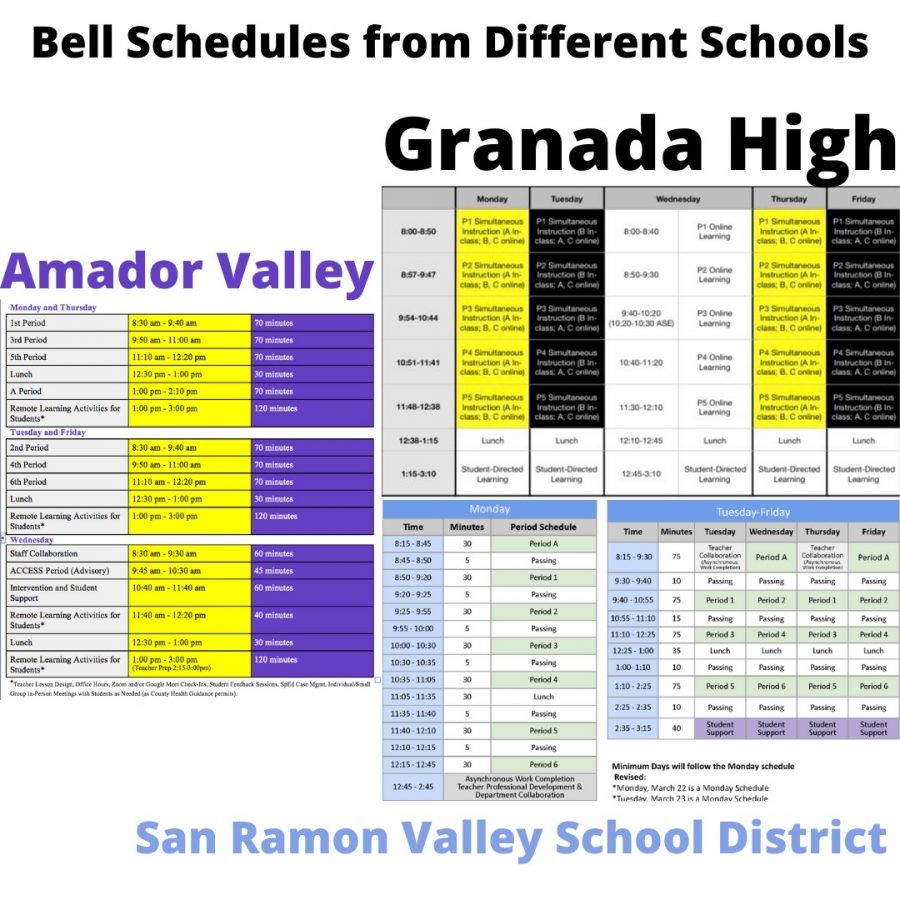Asynchronous versus synchronous: which provides a better learning experience?
Schedules from different high schools vary, but most schools have asynchronous work time.
March 26, 2021
Distanced learning guidelines have made it so there are hours of asynchronous learning time every week, and many students find that these times make it harder for them to learn than synchronous lessons.
Many of those familiar with the Amador schedule feel they enjoy asynchronous learning. Independent time to complete work can be a great way to learn time management and learn how you like to work.
“I like asynchronous time because I think it helps me learn to budget my time correctly for assignments and I think that the ability to do that can be valuable for the future,” said Ajay Reyes (‘23).
Other students agree, and they feel that the asynchronous time provided after school and on access days is a great time to do homework and extra classwork.
“I like the school schedule because we only have to focus on three classes a day so it’s pretty easy to balance out the work. I also love the fact that besides Access, Wednesday is an asynchronous day because it gives me time to catch up on my work and get a lot of assignments out of my way,” said Arushi Garg (‘23).
On the other hand, students of Livermore schools have voiced struggles with their schedule. They have five 50-minute long classes in the mornings, except for on Wednesdays when they have optional/per-request meeting time with teachers. The afternoons are spent in student-directed (asynchronous) learning.
“[Asynchronous learning is] less stressful but I wouldn’t want to do it all the time and I feel like I’m missing important parts of high school. In general I prefer synchronous/regular school because I feel like social interaction with students and teachers is a significant part of learning in high school,” said Natalie May (‘23), a Granada High School student.
Students of San Ramon schools also have an out-of-the-ordinary schedule. While, similarly to Amador, they have four block days — fewer, longer classes — and one minimum day, their school days start later than hours and end later than hours.
“I would say I like this schedule because two out of five days we have a late start [day],” said Saachi Kumar (‘23), a San Ramon student.
Kumar participates in A-period, but students who do not do A-period have four late start days.
Asynchronous time is a great way to develop independence and build time management skills while working on assignments, but opinions on whether asynchronous learning is effective or not vary from student to student, and it all depends on learning style. Whichever you prefer, Amador gives you time to work both synchronously and asynchronously to accommodate all students’ preferences.















